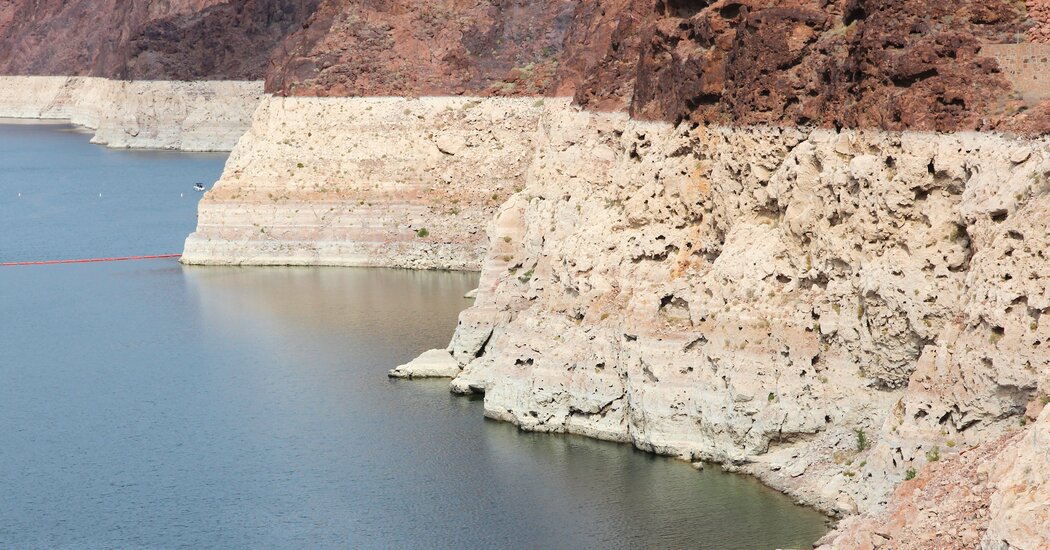
The other day I walked the floor of Lake Mead, a cracked and sun-baked Martian-scape that was once more than a hundred feet underwater. On the horizon, the eerie geologic formations that freaked out early white explorers displayed the latest bathtub rings in the rock.
Beyond the Southwest, the message of a vast and fast-evaporating artificial lake is that we can’t engineer our way out of this problem. The region is a relic of an era of ingenuity, and promise. Hoover Dam, like its upstream companion that created Lake Powell, demonstrated American engineering muscle at the peak of its powers. The dams were built around the idea that we’re bigger than any obstacle of nature; we can dynamite, dig and fill our way into creating a hydraulic machine.
And for more than 80 years, things have mostly worked as intended. As it flows for 1,450 miles from snowmelt in the high Rockies to a trickle in the Gulf of California, the Colorado River serves 40 million people. It meanders by fields, forests and cliffs in the upper basin and powers through Grand Canyon and other national parks in its lower half. But over the last century, natural flows have decreased by about 20 percent, largely because of climate change.
So long as the world continues to warm, no amount of new dams can resuscitate a gasping resource. Doing all the right things — growing more food and building smarter communities with less water — can only go so far.
A previous megadrought in these parts may have compelled the Ancestral Pueblo cultures, also known as the Anasazi, to abandon their homes in the cliffs during the 1200s. That’s one theory, for they didn’t leave behind a detailed history. Only the empty dwellings.
Scientists know about their catastrophe from studying tree rings, a book of nature with chapters on wet and dry years. Of course, this was well before we started pumping greenhouse gases into the atmosphere. Their peril was believed to have come from years of drought, not a warming earth. In the modern age, dry years can be somewhat managed. Climate cannot.
An ancient tree would suggest that we can live through this, as well. But what if the tree can’t make it through this year, or next? Then, we’ll be left with human artifacts, the shell of Las Vegas, a lake no more, to tell the story of what happened. The cause will not be a mystery.
Timothy Egan (@nytegan) is a contributing Opinion writer who covers the environment, the American West and politics. He is a winner of the National Book Award and author, most recently, of “A Pilgrimage to Eternity.”
The Times is committed to publishing a diversity of letters to the editor. We’d like to hear what you think about this or any of our articles. Here are some tips. And here’s our email: letters@nytimes.com.
Follow The New York Times Opinion section on Facebook, Twitter (@NYTopinion) and Instagram.
Average Rating